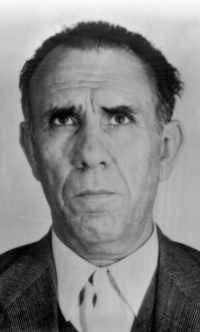
Gaetano Badalamenti was a powerful member of the Sicilian Mafia. Don Tano Badalamenti was the capofamiglia of his hometown Cinisi, Sicily, and headed the Sicilian Mafia Commission in the 1970s. In 1987, he was sentenced in the United States to 45 years in federal prison for being one of the leaders in the "Pizza Connection", a $1.65 billion drug-trafficking ring that used pizzerias as fronts to distribute heroin from 1975 to 1984. He was also sentenced in Italy to life imprisonment in 2002 for the 1978 murder of Peppino Impastato.
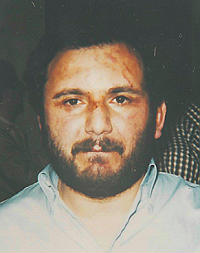
Giovanni Brusca is an Italian mobster and former member of the Corleonesi clan of the Sicilian Mafia. He played a major role in the 1992 murders of Antimafia Commission prosecutor Giovanni Falcone and businessman Ignazio Salvo, and once stated that he had committed between 100 and 200 murders. Brusca had been sentenced to life imprisonment in absentia for Mafia association and multiple murder. He was captured in 1996, turned pentito and his sentence reduced to twenty-six years in prison. In 2021, Brusca was released from prison.

The Piazza Fontana bombing was a terrorist attack that occurred on 12 December 1969 when a bomb exploded at the headquarters of Banca Nazionale dell'Agricoltura in Piazza Fontana in Milan, Italy, killing 17 people and wounding 88. The same afternoon, another bomb exploded in a bank in Rome, and another was found unexploded in the Tomb of the Unknown Soldier. The attack was carried out by the neo-fascist paramilitary terrorist group Ordine Nuovo, and possibly undetermined collaborators.

The Maxi Trial was a criminal trial against the Sicilian Mafia that took place in Palermo, Sicily. The trial lasted from 10 February 1986 to 30 January 1992, and was held in a bunker-style courthouse specially constructed for this purpose inside the walls of the Ucciardone prison.

Cinisi is a town and a comune in the Metropolitan City of Palermo in Sicily. As of 1 January 2022 it has a population of 11.846.
The Sicilian Mafia Commission, known as Commissione or Cupola, is a body of leading Sicilian Mafia members who decide on important questions concerning the actions of, and settling disputes within the Sicilian Mafia or Cosa Nostra. It is composed of representatives of a mandamento who are called capo mandamento or rappresentante. The Commission is not a central government of the Mafia, but a representative mechanism for consultation of independent Mafia families who decide by consensus. Its primary role is to keep the use of violence among families within limits tolerable to the public and political authorities.
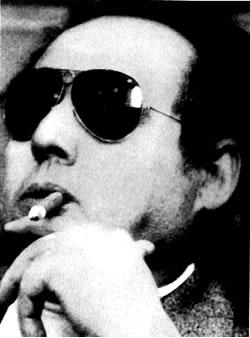
The Corleonesi Mafia clan was a faction within the Corleone family of the Sicilian Mafia, formed in the 1970s. Notable leaders included Luciano Leggio, Salvatore Riina, Bernardo Provenzano, and Leoluca Bagarella.

The Years of Lead were a period of political violence and social upheaval in Italy that lasted from the late 1960s until the late 1980s, marked by a wave of both far-left and far-right incidents of political terrorism and violent clashes.
The Castel Volturno massacre is the name given by the Italian press to a mass shooting perpetrated by the Casalesi clan in which seven people were killed on 18 September 2008. The massacre outside the Ob Ob Exotic Fashion tailor shop on the Via Domitiana was widely characterized as part of a growing conflict between the native Camorra and the immigrant African drug gangs. Murdered were Antonio Celiento, the owner of an arcade next to Baia Verde, and six African immigrants: Samuel Kwaku, 26 (Togo); Alaj Ababa (Togo); Francis Antwi, 31 (Ghana); Eric Affum Yeboah, 25 (Ghana); Alex Geemes, 28 (Liberia) and Cristopher Adams, 28 (Liberia). Joseph Ayimbora (Ghana), 34, survived by feigning death; he later helped identify the killers.

The Viale Lazio massacre on 10 December 1969 was a settling of accounts in the Sicilian Mafia. Mafia boss Michele Cavataio and three men were killed in the Viale Lazio in Palermo, Sicily, by a Mafia hit squad. The bloodbath marked the end of a pax mafiosa that had reigned since the Ciaculli massacre until the end of the Trial of the 114 against Cosa Nostra.

Salvatore Riina, called Totò, was an Italian mobster and chief of the Sicilian Mafia, known for a ruthless murder campaign that reached a peak in the early 1990s with the assassinations of Antimafia Commission prosecutors Giovanni Falcone and Paolo Borsellino, resulting in widespread public outcry, legal change and a major crackdown by the authorities. He was also known by the nicknames la belva and il capo dei capi.
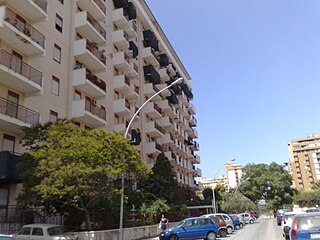
The via D'Amelio bombing was a terrorist attack by the Sicilian Mafia, which took place in Palermo, Sicily, Italy, on 19 July 1992. It killed Paolo Borsellino, the anti-Mafia Italian magistrate, and five members of his police escort: Agostino Catalano, Emanuela Loi, Vincenzo Li Muli, Walter Eddie Cosina, and Claudio Traina.

Alcamo Marina is a seaside resort in the north-western part of Sicily and in the town territory of Alcamo. It is situated 6 km far from it, about 5 km from the small town of Castellammare del Golfo, 16 km from the village of Scopello, and 49 km from the famous seaside resort of San Vito Lo Capo. Alcamo Marina is characterized by a very fine, golden sand beach about 10 km long, absolutely free.
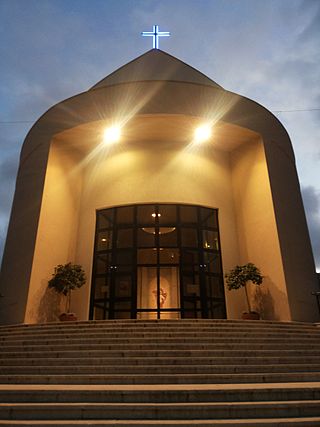
Sacro Cuore is a Catholic church located in Alcamo, in the province of Trapani.

Monsignor Vincenzo Regina was an Italian presbyter and historian.

The Circonvallazione massacre, in Italian Strage della Circonvallazione, was a Cosa Nostra attack that took place on June 16, 1982 on the Palermo ring road. The attack was directed against Catanese boss Alfio Ferlito, who was being transferred from Enna to the Trapani jail, and died with the three escort carabinieri and the 22-year-old Giuseppe Di Lavore, the driver of the private company tasked with the transportation of prisoners, who had replaced his father. The mandators of this massacre were Salvatore Riina and Bernardo Provenzano, in favor to Nitto Santapaola, who was in a year-long war with Ferlito for the dominance in the city of Catania territory.
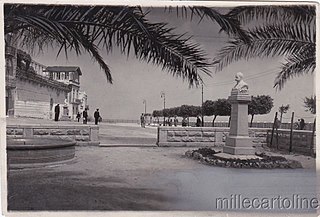
Piazza Bagolino is one of the main squares of Alcamo, in the province of Trapani. It is located near the town centre and it is one of the town attractions.
The Galatolo Mafia clan was a criminal family originating from the Acquasanta neighborhood of Palermo. They are one of the longest-running Mafia clans in the city, having held important positions throughout most of the 20th century and beyond and even coming to rule the entire Resuttana mandamento in the early 21st century.















